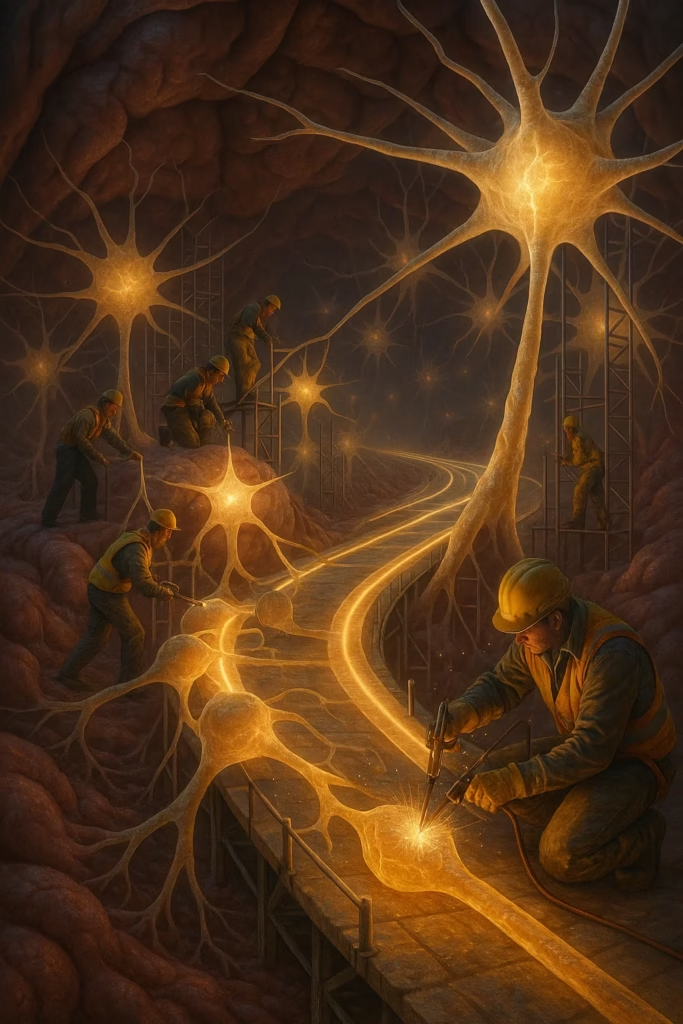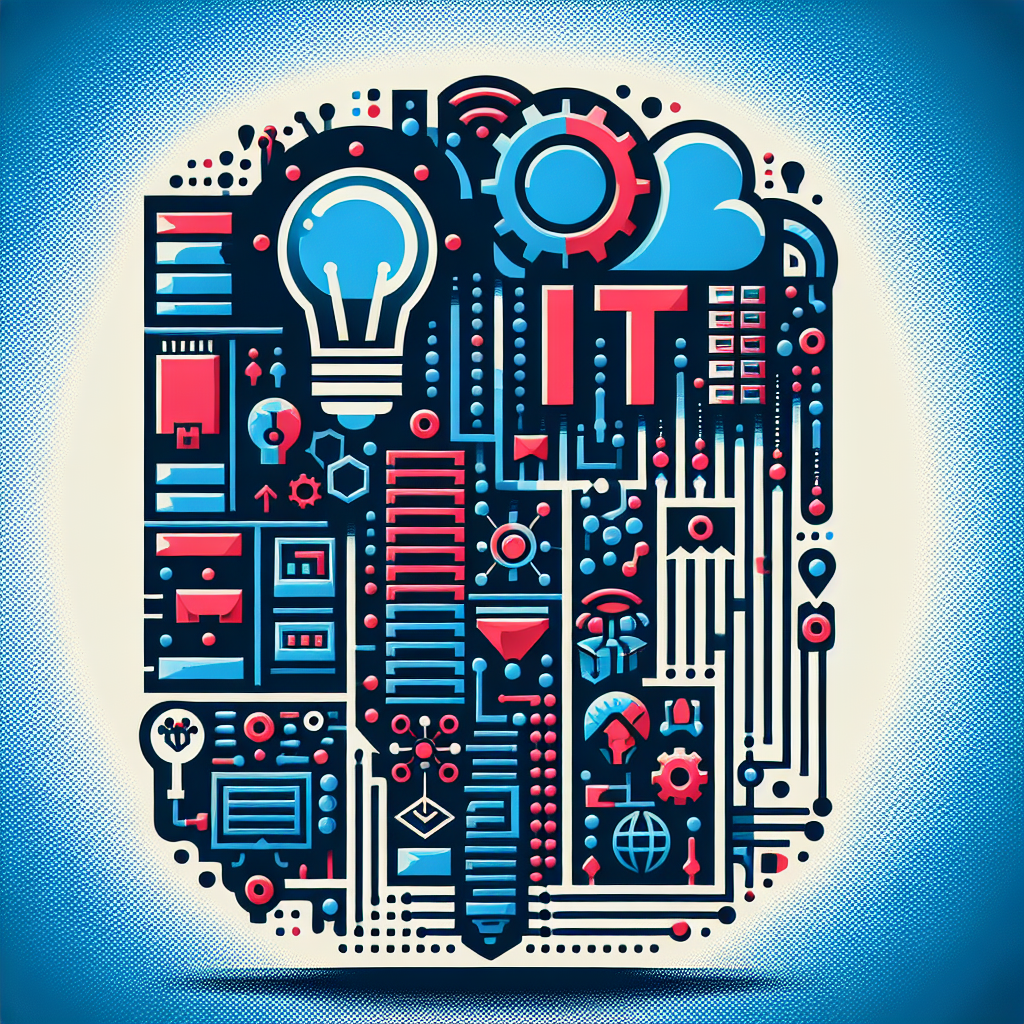Neuroplasticity – nature’s algorithm that inspired the AI revolution
Introduction: A Bridge Between Biology and Technology
If in the previous text we understood myelin as the critical hardware component of our nervous system – the biological insulation that optimizes signal transmission – then neuroplasticity is its software part. It is the dynamic, living algorithm for updating and optimizing the signal processing network.
While the wires and insulation are installed during development (myelination), the very network for signal transmission and processing can change, rewire, and improve throughout our entire lives. It is this fundamental property of the living brain – the ability to reorganize through the creation and strengthening of connections (synapses) in the learning process – that became the key paradigm for the development of today’s artificial intelligence systems.
Neuroplasticity: Building Highways in the Living Brain 🛣️ ➡️ 🛣️🛣️🛣️
Imagine building a highway through unexplored territory:
- Initial State: There are forested, faint paths (weak synaptic connections).
- Traffic (Experience): When trucks (important signals) start frequently using a certain route, construction work is activated to facilitate the use of the path that has proven important.
- Path Strengthening (Learning): The path widens, gets paved, turns into a highway (the synapse is strengthened – traffic becomes more frequent). This is Hebb’s principle: “Neurons that fire together, wire together.”
- Alternative Paths (Adaptation): If traffic on the main highway is interrupted (brain injury), traffic is gradually redirected to smaller paths, which are then strengthened through use. This is compensatory plasticity.
In the biological brain, this manifests through:
- Creation of new synapses between neurons.
- Increased efficiency of existing synapses (Long-Term Potentiation – LTP).
- Weakening and “pruning” of rarely used connections (“use it or lose it”).
Engineering Implementation: From Biology to Artificial Neural Networks (ANN) 💻
Engineers and scientists said: “If this is the algorithm that enables natural intelligence, let’s implement it in software.”
Thus, Artificial Neural Networks (ANNs) were born – mathematical models directly inspired by this structure:
- Neurons become nodes.
- Axons and dendrites become connections between nodes.
- Synapses become weights on these connections. This is the key!
The learning process in an ANN is a direct analogy of neuroplasticity:
The learning process in an artificial neural network mirrors neuroplasticity through clear steps. Experiencing the world (sensory input) in biology corresponds to training on a dataset in an ANN. The flow of signals through a network of neurons is equivalent to forward propagation through the network’s layers. Most importantly, the strengthening and weakening of synapses in the brain is directly mapped to the adjustment of weights between nodes in the model, which is the engineering equivalent of impedance matching of individual electronic circuits to achieve the system’s desired response. Finally, the formation of memory and skill occurs through the convergence of weights towards optimal values, which is essentially the process of system calibration for error minimization.
Backpropagation: The Mechanism for Self-Organization ⚙️
How does the network “know” how to adjust its “weights” (synapses)? It uses a brilliant algorithm called Backpropagation.
- Prediction: The network receives an input (e.g., a picture of a cat) and gives an output (e.g., “that’s a dog”).
- Error: The difference between the output and the true value (“that’s a cat”) is calculated.
- Adjustment: The error is propagated backward through the network, from the output to the input.
- Plasticity in Action: Each “weight” (synapse) is adjusted slightly so that the next time the error will be smaller.
This is the systemic equivalent of learning from mistakes. As more data passes through the network, it gradually adjusts its millions of parameters, forming an internal representation of knowledge – just as the brain builds and strengthens neural pathways through experience.
From Basic ANN to LLMs (ChatGPT, Gemini, Claude, DeepSeek) and Content Creators 🚀
Today’s advanced systems, like ChatGPT, Gemini, Claude, and DeepSeek, have evolved from basic ANNs:
- Deep Layers: They use Deep Neural Networks with dozens or hundreds of layers, enabling them to learn increasingly complex abstractions – from lines to shapes, from shapes to objects, from individual objects to the contexts they reside in.
- Transformer Architecture (Foundation of LLMs): This specific architecture introduces the “attention mechanism”. It allows the model, while processing a word, to “pay attention” to the most important other words in the sentence, regardless of their overall occurrence. This is like the brain, while reading, dynamically highlighting and connecting key concepts, ignoring non-essential information.
- Self-Organization on a Massive Scale: LLMs are “trained” on enormous amounts of internet text. Through backpropagation, they self-organize their billions of parameters to recognize grammatical structures, concepts, logic, and even creative patterns – without explicit programming. They build their own “synapses”.
Conclusion: The Circle is Complete 🔄
Neuroplasticity taught us that intelligence is not fixed hardware, but a dynamic process of network optimization through experience. We took this idea from biology, formalized it through mathematics (graph theory, gradient calculation), and implemented it in silicon.
All modern AI assistants and content creators use this principle at some level. They are not programmed with rules; they are “trained”; their internal connections are “strengthened” or “weakened” by data, just as our brain changes throughout life.
Therefore, when you converse with ChatGPT, Gemini, Claude, or DeepSeek, you are not conversing with a set of static rules. You are conversing with a dynamic, plastic system whose fundamental architecture is inspired by the most complex and adaptive system we know – the human mind.
Follow us for new analogies between biology and technology. Innovation learns from the greatest innovator – nature.


Leave a Reply